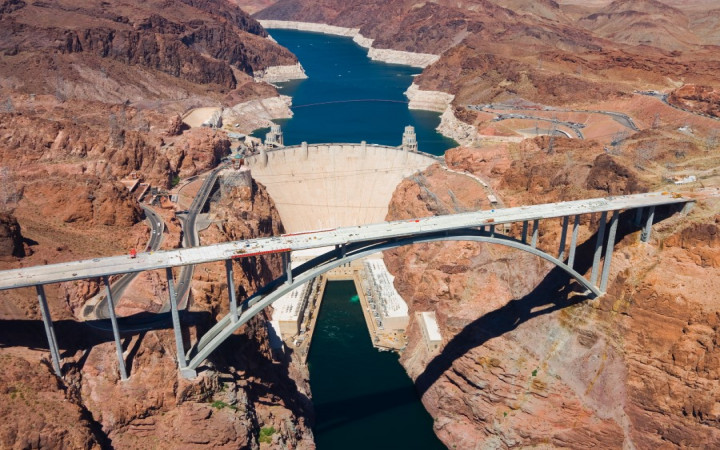Have you ever been whitewater rafting? If so, you know all about the power of water. The nation's rivers bring life to the areas they travel through. Not only are they means of transportation, but they also provide necessary water for farmers and communities.
Rivers can also be destructive, however. Floods can devastate communities and turn previously good farmland into muddy tracts filled with silt and sediment. What can be done about a wild river that provides needed water but also tends to destroy everything in its path from time to time? For centuries, people have tried to tame rivers by building dams.
Dams can harness the power of rivers, taming them and using their power to generate electricity in the process. Today's Wonder of the Day takes a closer look at a dam that was designated a National Historic Landmark in 1985 and one of America's Seven Modern Civil Engineering Wonders in 1994. What are we talking about? Hoover Dam, of course!
Once known as Boulder Dam, Hoover Dam is a concrete arch-gravity dam across the Black Canyon of the Colorado River between the states of Arizona and Nevada. Located a short drive southeast of Las Vegas, Hoover Dam is a popular tourist destination that attracts over seven million visitors each year.
Built between 1931 and 1935 during the Great Depression, over 21,000 workers took part in building the massive structure. Rising over 726 feet from bedrock to its crest (about the height of a 60-story building), the huge concrete wedge that is Hoover Dam required five million barrels of cement. That's enough concrete to pave a highway all the way from San Francisco to New York City! The completed structure weighs over 6,600,000 tons.
Hoover Dam represents an engineering feat that some believed couldn't happen. Its construction required resources and techniques that had never been tried before. For example, setting concrete generates a large amount of chemical heat. To dissipate the heat and avoid issues with expansion and contraction of the dam, engineers embedded nearly 600 miles of steel pipe in the concrete to carry refrigerated water to absorb the heat.
The chemical heat from setting concrete wasn't the only heat issue. The oppressive conditions of the desert also made life difficult for the workers, who persevered through temperatures that reached 115 degrees outside and over 140 degrees inside the tunnels that had to be dug to divert the Colorado River's waters for construction of the main part of the dam.
Workers also had to clear the steep canyon walls with steel poles, jackhammers, and dynamite. Some workers had to complete these tasks suspended nearly 800 feet from the canyon rim. Over the course of construction, nearly 100 workers lost their lives.
When it was completed, Hoover Dam was the largest dam in the world. It tamed the Colorado River and enabled the irrigation of over two million acres in the Southwest, fueling the development of cities such as Los Angeles, Las Vegas, Phoenix, and Tucson. Its hydroelectric turbines also generate enough electricity to power 1.3 million homes.
Hoover Dam also created a popular recreation area known as Lake Mead. Today, Lake Mead is still the largest reservoir in the United States by volume. Over 10 million people enjoy the waters of Lake Mead each year.




